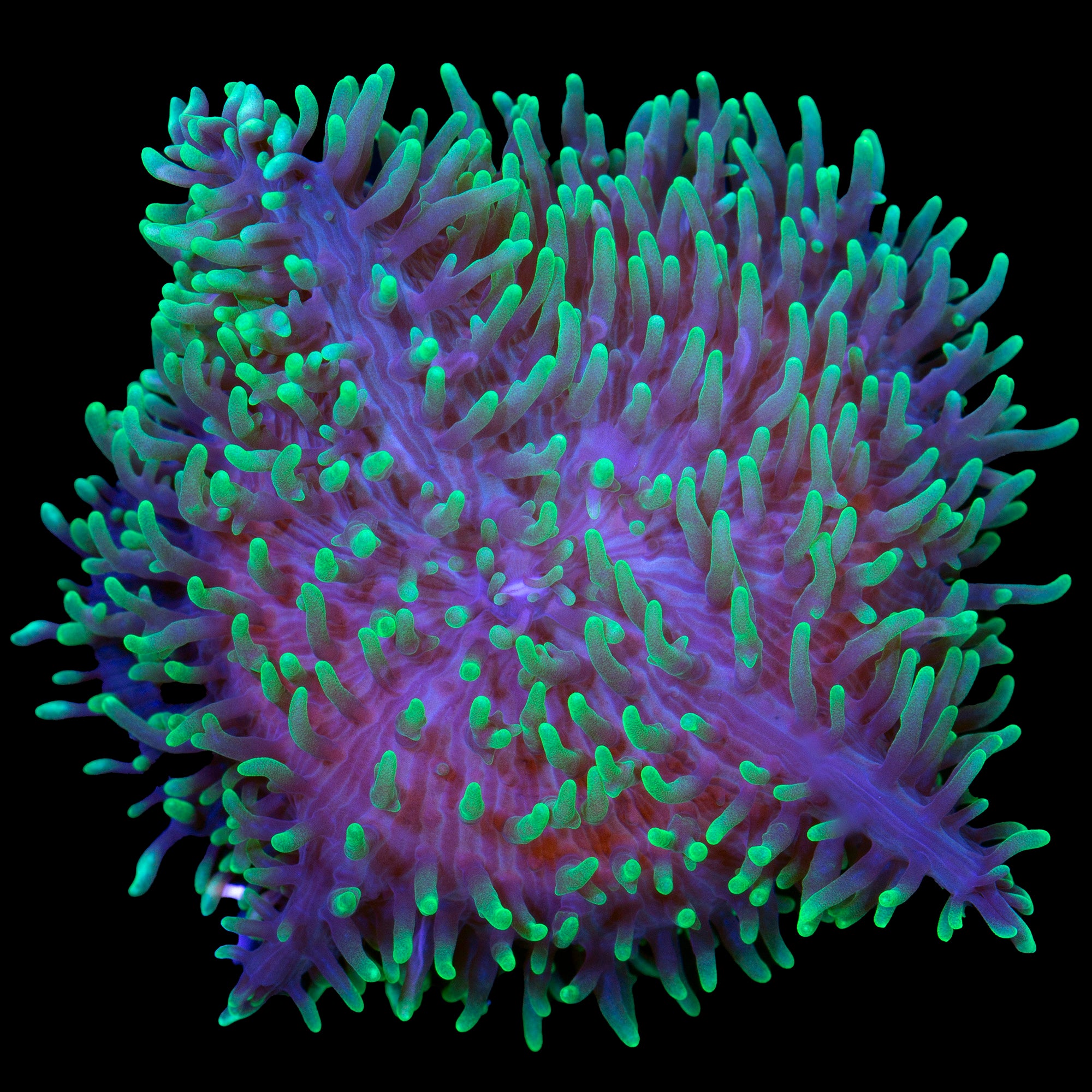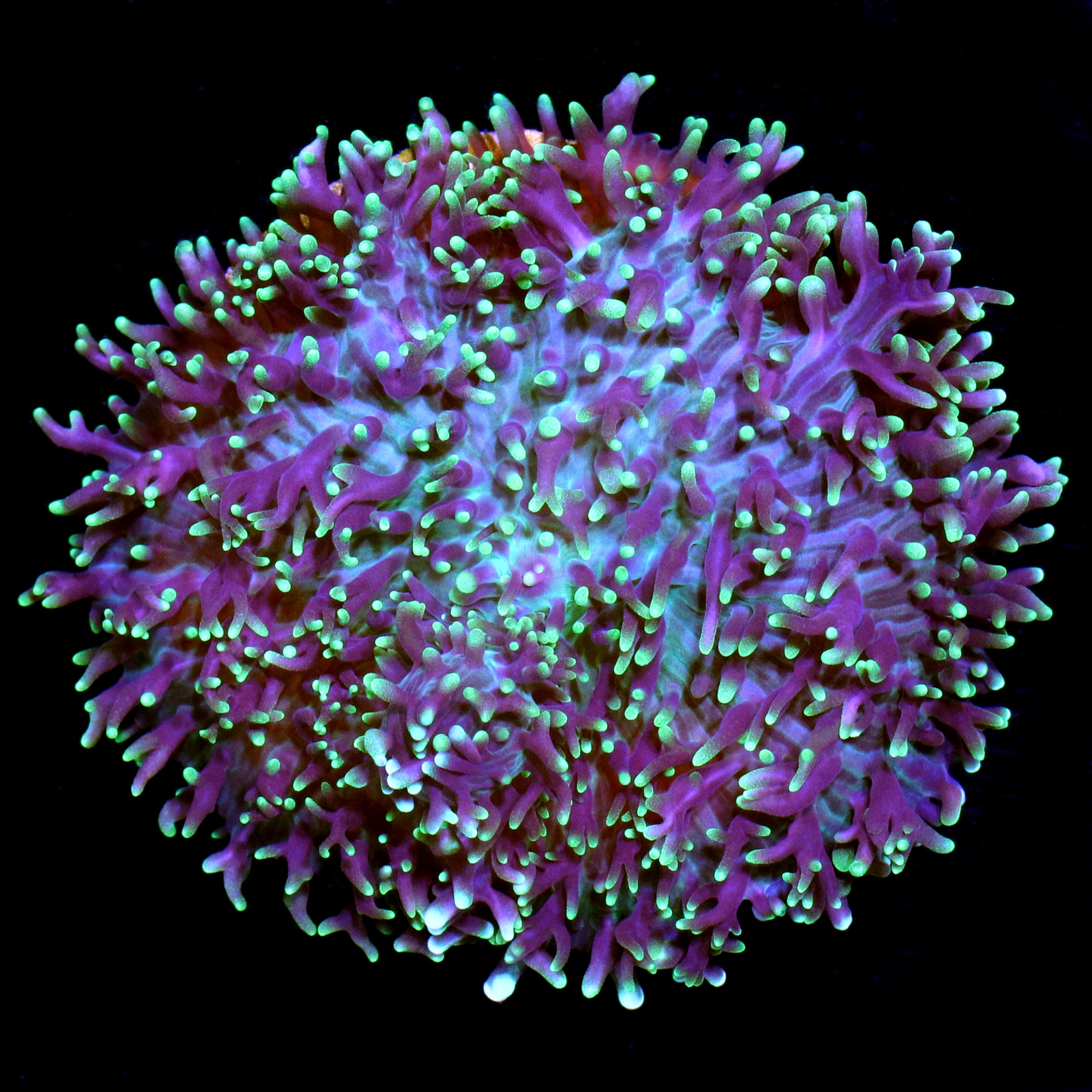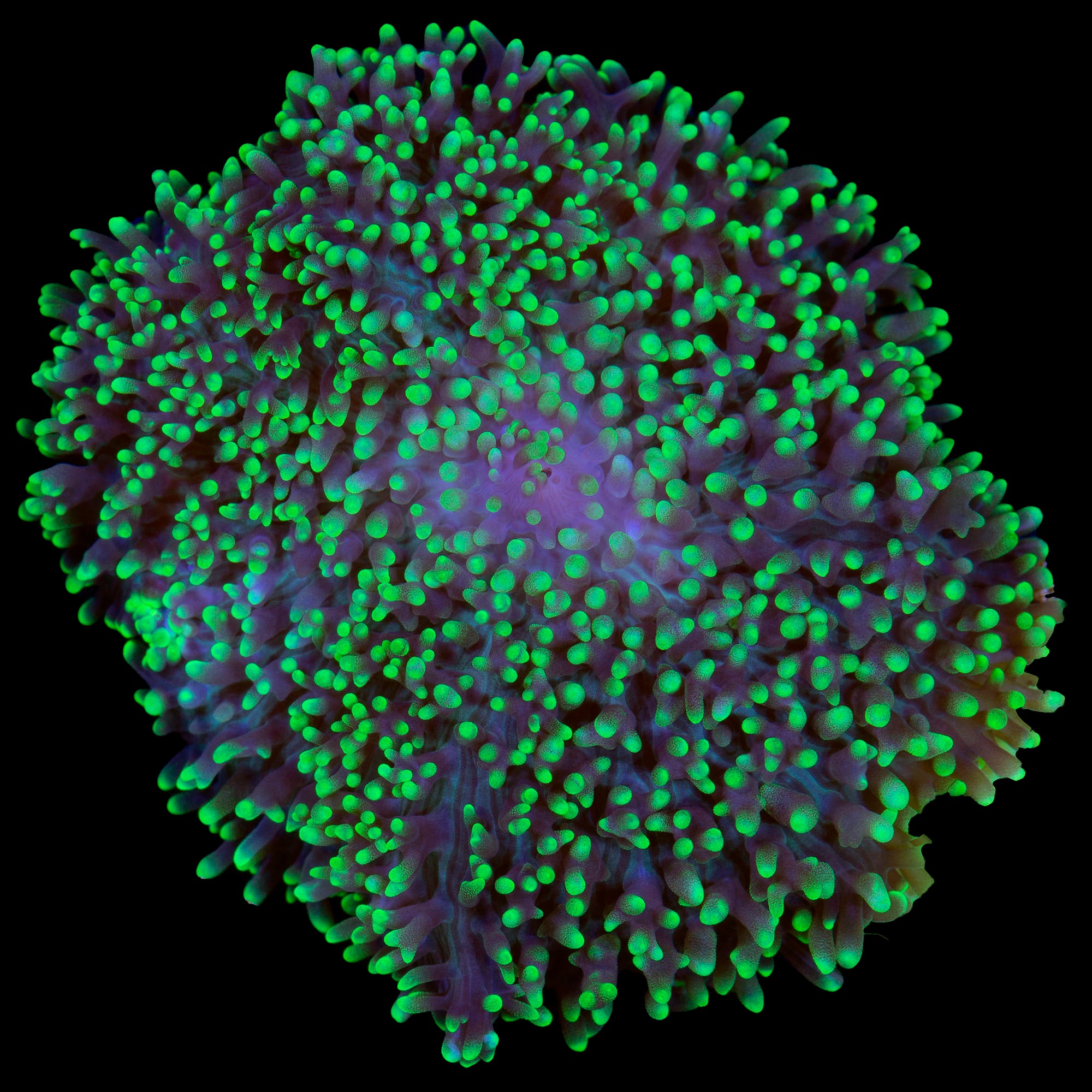Free Shipping Over $249. Or $29.99 Flat Rate Over $100
Hairy Mushrooms
$ 38.99
Please select all options.
How to Care for Hairy Mushrooms
written by Dave Burr
Hairy Mushrooms can grow to 3" in diameter. They grow very densely, often covering the rock completely. These mushrooms will grow and reproduce by fission in the aquarium when provided with the proper environment.
Placement: Mount the Hairy Mushrooms using IC gel glue, or putty, in the bottom half of the aquarium where they can reproduce and expand their colonies over the rock. If you do not want them growing on your your main rock structure try creating a mushroom island by mounting several types of mushrooms to one larger rock and placing it as an island in your sand bed.
Feeding: Although symbiotic algae called zooxanthellae hosted within them supply some of their nutritional requirements through photosynthesis they do benefit from supplemental feedings of phytoplankton, zooplankton, and/or marine snow.
Lighting & Flow Requirements: Hairy Mushrooms require low to moderate water flow and low to moderate lighting (PAR 80-250). T5's, Metal Halides, or LED's can all grow Hairy Mushrooms when the proper PAR levels are provided. We recommend a 14-20K color spectrum for best coloration.
Care Level: Easy
Lighting Requirements: Low to moderate (PAR 80-250)
Water Flow: Low to moderate
Aggressiveness: Semi-aggressive
Range: Indo-Pacific
Family: Discosomatidae
Water Conditions: 75-80° F; sg 1.024-1.026 (1.025 is ideal); pH 8.1-8.4 Ca 420-440 ppm, Alk 8-9.5 dKH, Mg 1260-1350, Nitrates <10ppm, Phosphates, < .10ppm
Water Chemistry: Providing additions of iodine will help Hairy Mushrooms grow. Most good salt mixes will provide enough iodine through water changes. It is important that proper calcium (420-440 ppm), alkalinity (8-9.5 dkh - run it 7-8 if you are carbon dosing) , and magnesium levels (1260-1350 ppm) are maintained. Raising magnesium levels gradually up to 1400-1600 ppm can help to combat algae outbreaks, just keep CA and Alk in line as you raise the Mg. Nitrates should be below 10 ppm and phosphates should be below .10 ppm. We recommend doing a water change when Nitrate levels rise to 10 ppm. It is important to replace your phosphate media when phosphates rise to .10 ppm. Media Reactors make the most efficient use of your phosphate media by fluidizing it.
Dosing: Vivid Aquariums uses and recommends dosing pumps to automate the dosing of additives and keep your levels more constant. A dosing pump can alleviate the chore of manually dosing your aquarium with Ca, Alk, & Mg 2,3, or 4 times per week and will benefit your aquarium by keeping your levels constant through frequent small additions of Ca, Alk, & Mg. Our tanks all progressed when we switched from 3 manual dosings per week to 70 automatic dosings per week and we got a lot more work done.
Category: 25-50, low-to-moderate-lighting, Mushrooms, rhodactis-sp
Type: Corals and Inverts




